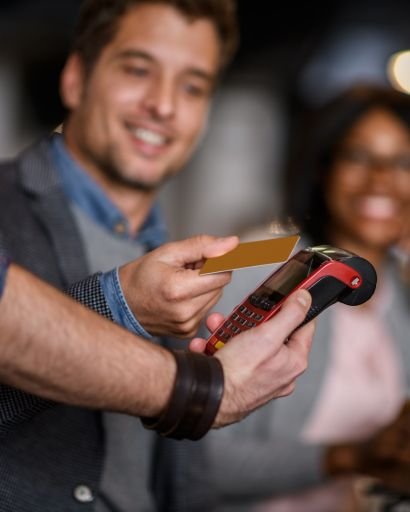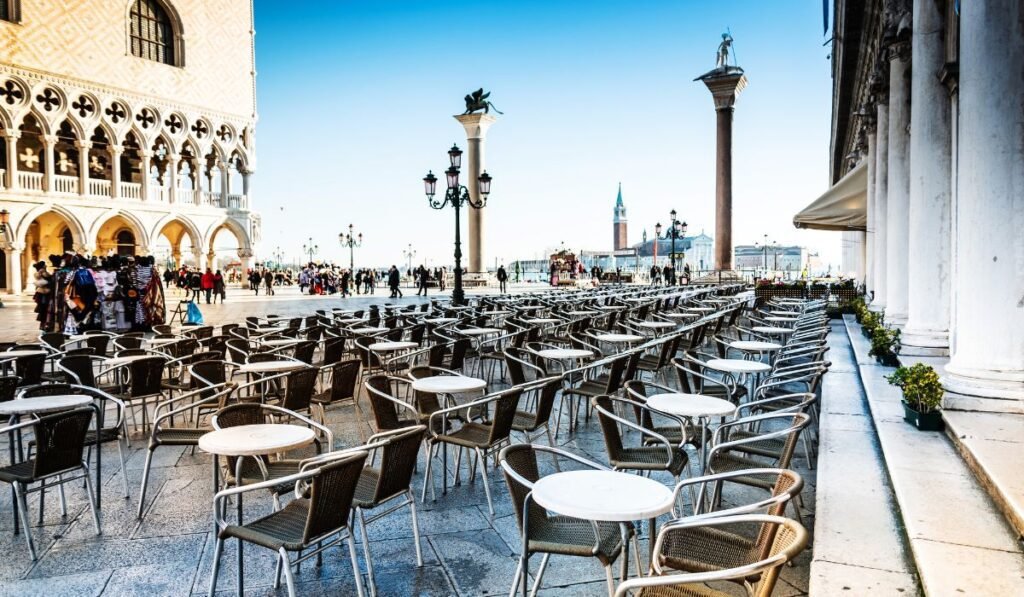Italy has been a member of the European Union (EU) since 1958 and part of the Schengen Zone since 1997. However, it wasn’t until 2002 that the Mediterranean country switched over to using the Euro as its official currency.
While cash is still widely used In Italy, especially in smaller establishments and rural areas, credit and debit cards are accepted nearly everywhere now these days, too, meaning that you can typically tap your card or pay digitally pretty much anywhere you go these days.
With that said, familiarizing yourself with the currency exchange rates and having a basic understanding of how to handle money in Italy can make your travel experience that much smoother. So, here’s what to know about banks, exchange offices, and using ATMs during your visit.
Italian currency is the Euro. It was previously the Italian lira until the beginning of 2002, when the Mediterranean country switched to the Euro.
EUROPE TRAVEL INSIDER
Italian Currency: An Overview
As mentioned, the currency used in Italy is the Euro, which is also the official currency of the Eurozone.
The Euro was adopted on January 1st, 1999, although coins and banknotes weren’t put into circulation until January 1st, 2002 (and that was following decades of preparation — it takes a lot to switch several countries over to a single common currency).
When looking for exchange rates or information online, you’ll see the currency denoted by the symbol € and with the exchange code EUR.
The Euro ultimately replaced the Italian lira, which had been the official currency since 1861, following the unification of the Italian states (however, fun fact, Italian banks actually still accepted lira for exchange until 2012).
The Euro eliminated the need for currency exchange when traveling within the European Union, making it easier for Italians to conduct cross-border transactions and facilitating travel among tourists.
For example, you can arrive from the US to Spain and spend a few weeks traveling all throughout Europe, visiting France, Germany, Italy, and Greece, and never have to exchange money — they all use the Euro.
Euro Banknotes & Their Denominations
The currency of Italy is divided into 100 cents, known as centesimi in Italian. Circulating coins are available in eight denominations, including 1, 2, 5, 10, 20, and 50 cents. You’ll also see a 1 and 2 euro coin.
Additionally, each denomination has different sizes, shapes, and metal compositions. Similarly, each coin bears a common European side, while the national side represents the issuing country (don’t worry — you can use coins issued in other European countries to pay in Italy).
Euro banknotes are available in seven denominations, including 5, 10, 20, 50, 100, 200, and 500 euros. However, it’s worth noting that the 200 and 500 euro notes are not commonly found in circulation (we’ve honestly never seen one in person). Each denomination has distinct characteristics to ensure easy identification. Similar to the coins, they vary in size, color, and design.
The banknotes share common design elements, featuring architectural styles from different periods in Europe’s history. Like dollars or pesos, they are also equipped with advanced security features, such as holograms and watermarks, to deter fraud.
Also Read: What is the Capital of Italy?

If you already knew the Euro was the currency in Italy, then maybe you clicked on this article because you’re wondering how to exchange currency while in Italy.
We’ve done that several times, too. Here are a few tips on how to get Euros once you’re in Italy (or any other European country that uses EUR as its currency).
- Airports, hotels, and banks are common places to exchange currency. Additionally, automated currency exchange terminals and ATMs are available throughout the country. Whichever option you choose, research their respective fees, which will vary. Airport currency exchanges typically offer some of the worst rates.
- ATMs, also known as Bancomats, are the most convenient and cost-effective method for getting euros in Italy. There are several ATMs throughout every city in Italy. Major networks like Plus, Cirrus, and Stars are supported by these machines, making it easy to enter your bank card and get cash out. However, the exchange rate, as mentioned, will vary, so be mindful of that (and any transaction fees your bank might charge). While we now have a Portuguese bank account and can withdraw in Euros, we typically used this method when traveling in Europe previously with an American bank card.
- Look at online currency converters for updated exchange rates. These provide real-time exchange rates. Similarly, online currency exchange services, such as Travelex, are helpful, but they may not offer the most competitive rates.
Our top tip for withdrawing cash in Italy and other countries? Remember to avoid carrying large amounts of cash and instead rely on debit or credit cards, as they are widely accepted.
Pro Tip: If you’re paying with your credit card, it will likely ask you whether you prefer to pay in your card’s currency or the local currency. Always pay in the local currency.
How to Make Cashless Payments in Italy
The pandemic forced a lot of countries around the world to adapt to cashless payments and other forms of digital payments. Therefore, making cashless payments in Italy is generally widely accepted and convenient. Digital payments are becoming more and more popular, providing a hassle-free experience for both locals and tourists.

In major cities such as Rome, Milan, Florence, and Venice, most establishments, including restaurants, shops, and hotels, accept card payments. Similarly, popular tourist centers like the Amalfi Coast, Cinque Terre, and Lake Como have embraced cashless transactions.
If you’re unsure whether a place might accept your credit card or digital payment, look for stickers or signs displayed at the entrance indicating the accepted cards, such as Visa, American Express, Mastercard, and Maestro. To make a card payment, ensure you have a chip-and-PIN card or a contactless-enabled card.
Although contactless payments with a smartphone phone are becoming popular, we suggest always carrying a card for convenience. You never know when you might need a euro or two for a small tip or have to pay with cash for a taxi or metro ride. We carry at least €50 in cash with us whenever we travel to Italy (or anywhere else, for that matter).
Tips for Paying for Things in Italy:
- Check to see if you need to notify your bank of your travel plans to avoid any issues with using your card abroad. Nothing’s worse than getting to a new city and realizing your card’s been blocked or frozen after a few payments. This has happened to us before, and while it typically just requires a quick call to your bank’s customer support, it’s an unnecessary hassle you don’t need during your trip.
- Keep your cards in a safe place where you can access them. Italy is a pretty safe country, but pickpocketing can be a big issue in some of the larger cities like Rome (especially if you’re taking public transportation). Don’t store your wallet in your back pocket or in your backpack where someone could quickly unzip a pocket to take it out.
Tips for Paying with Italian Money

Traveling to Italy can be an exciting experience, but it’s easy to blow your whole budget in a few days if you’re careful about how you spend.
To help you manage your money while traveling in Italy, avoid currency exchange bureaus at the airport. They charge high fees. With other options available, it’s best to wait.
If you’re worried about needing cash immediately once you arrive at the airport, withdraw a few Euros at an ATM with your bank card. We’ve found this to be the easiest option, and depending on your bank, the fees aren’t likely going to be higher than using an exchange company.
Insider Tip: Look for ATMs from banks, not the blue Euronet ATMs you see at most airports. The Euronet ATMs often offer horrible exchange rates.
When exchanging money, ask for smaller denominations. This will make it easier for you when paying for smaller purchases such as bus tickets, snacks, or local souvenirs.
Using your credit card is convenient, too, but the wrong type of card can cost you money. Look for a card that doesn’t have foreign transaction fees. Checking your bank’s fees can also be helpful. If you have a credit card optimized with perks or points, use that card and enjoy the cashback perks.
Finally, use a mix of cash and cards in Italy. Use your card for large purchases such as renting a car or booking a hotel. Reserve cash for those small everyday purchases, such as meals at local restaurants and transportation.

